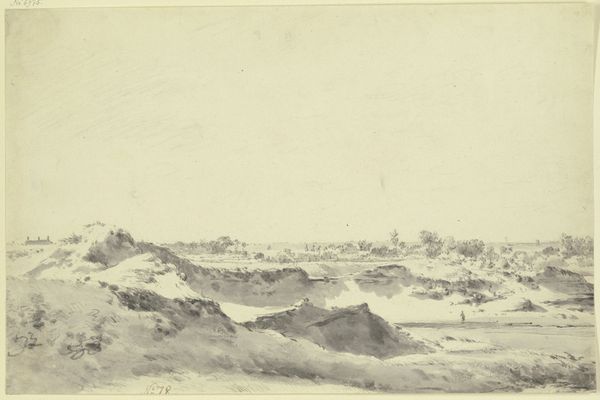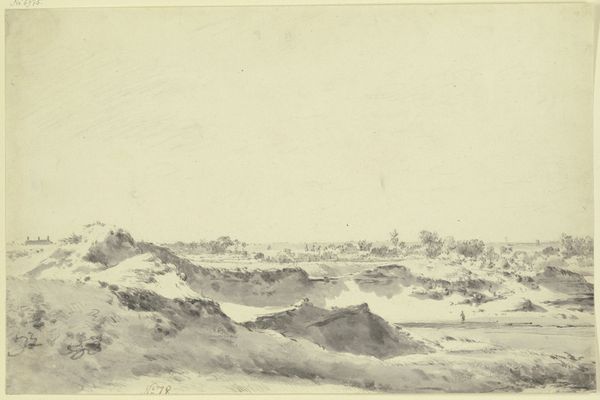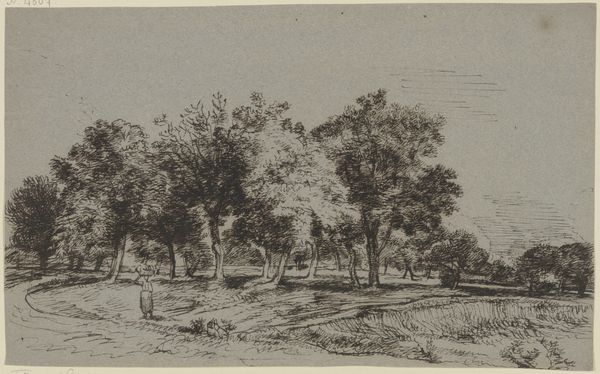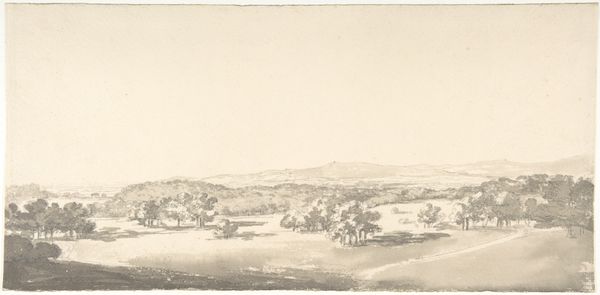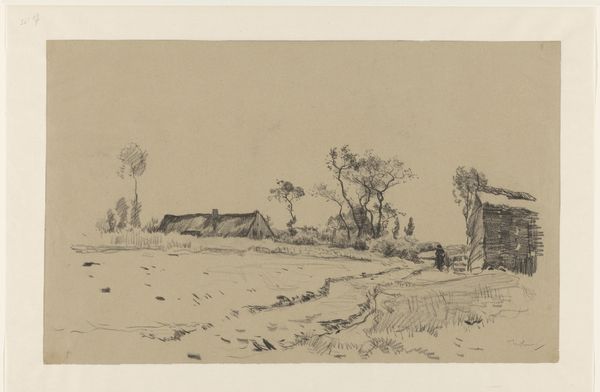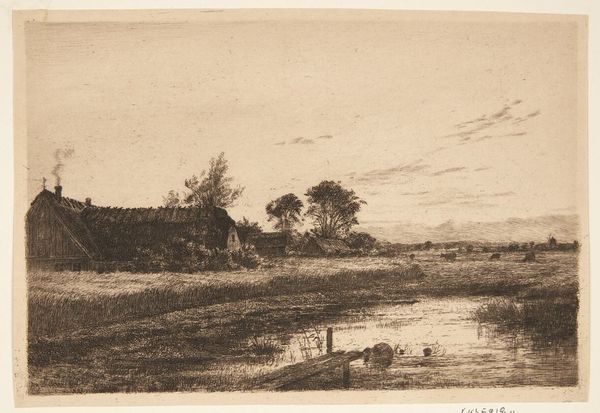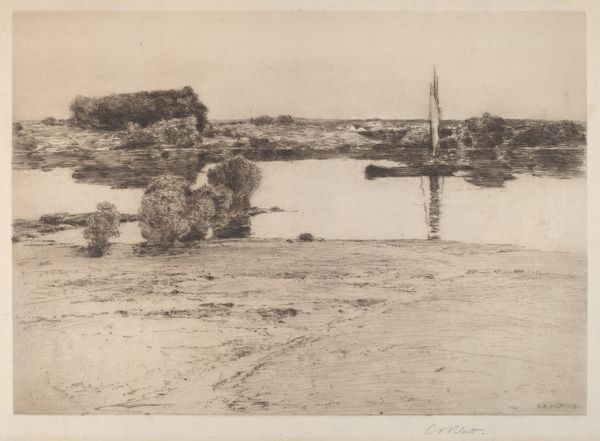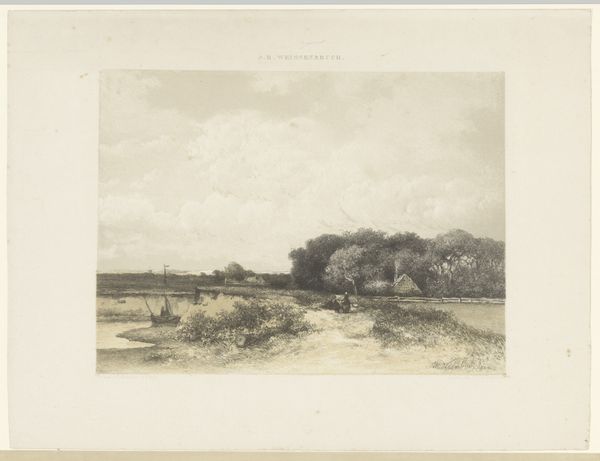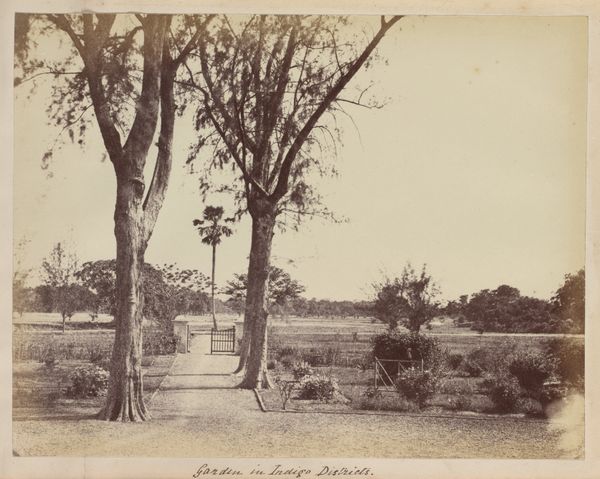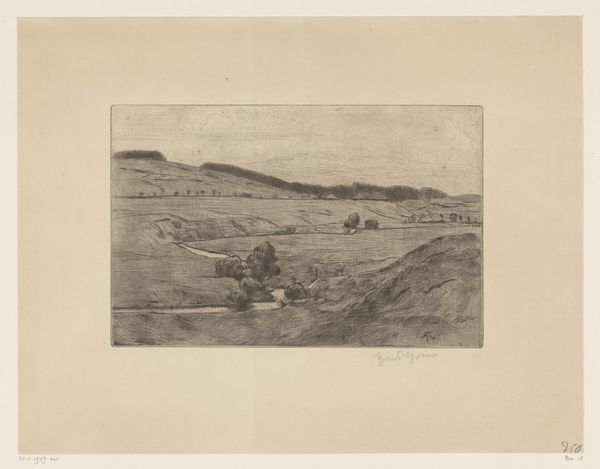
drawing, print, etching, plein-air, paper, ink, charcoal
#
drawing
#
water colours
#
ink painting
# print
#
impressionism
#
etching
#
plein-air
#
landscape
#
charcoal drawing
#
paper
#
ink
#
charcoal
Dimensions: plate: 21.8 × 27.5 cm (8 9/16 × 10 13/16 in.) sheet: 28.4 × 37.4 cm (11 3/16 × 14 3/4 in.)
Copyright: National Gallery of Art: CC0 1.0
Editor: Here we have Charles A. Platt’s "Cape Ann Willows," created in 1887, using ink and charcoal on paper, and employing print and etching techniques. The monochromatic palette lends it a quiet, almost melancholic feel. What social currents were Platt engaging with in this understated landscape? Curator: That’s a perceptive initial reading. The quiet melancholy you’re picking up isn't just aesthetic; it’s interwoven with the late 19th century’s complex relationship with nature. Think about the rise of industrialization and urbanization happening simultaneously. Platt, along with many artists of his time, were part of a movement – though perhaps a passive one – that, through idealized landscapes, was subtly resisting those rapid societal shifts. Editor: So the act of portraying this undisturbed natural scene is itself a statement? Curator: Precisely. Cape Ann, in particular, was a refuge for artists seeking respite from urban life, yet it was a space being actively 'discovered' and reshaped by artistic intervention. Platt's choice of printmaking, a readily reproducible medium, suggests a desire to democratize access to these images of unspoiled nature, or perhaps participate in the burgeoning art market? Consider how even the act of depicting 'nature' is mediated by class, access, and cultural expectations. How does his technique and his composition shape your understanding now? Editor: The seemingly effortless lines feel deliberate, almost strategic, creating a curated experience of nature, one that obscures any evidence of labor or industrialization... I hadn't considered that tension before. Curator: It's that very tension – between idealization and reality, accessibility and privilege – that makes Platt’s work so compelling. Seeing it as more than just a pretty picture shifts our perspective. Editor: Right, it’s a window into the anxieties and aspirations of a specific moment in time.
Comments
No comments
Be the first to comment and join the conversation on the ultimate creative platform.
